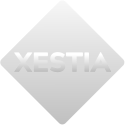--- /dev/null
+Xestia Address Book Windows Development
+=======================================
+
+Step 1: Setup environment variables
+===================================
+
+The Visual Studio 2013 (Express) project uses the following environment
+variables to work out where the header and library files are.
+
+=============================================================================
+| Type | Arch | Normal name | Debug name |
+=============================================================================
+| wxWidgets | i686 | WXWIDGETS_32BIT | WXWIDGETS_32BIT_DEBUG |
+| wxWidgets | x64 | WXWIDGETS_64BIT | WXWIDGETS_64BIT_DEBUG |
+| SFML | i686 | SFML_32BIT | SFML_32BIT |
+| SFML | x64 | SFML_64BIT | SFML_64BIT |
+| libcurl | i686 | CURL_32BIT | CURL_32BIT |
+| libcurl | x64 | CURL_64BIT | CURL_64BIT |
+| libxml2 | i686 | LIBXML2_32BIT | LIBXML2_32BIT |
+| libxml2 | x64 | LIBXML2_64BIT | LIBXML2_64BIT |
+| iconv | i686 | ICONV_32BIT | ICONV_32BIT |
+| iconv | x64 | ICONV_64BIT | ICONV_64BIT |
+=============================================================================
+
+To setup the envrionment variables on your system, go into the Control Panel,
+open System and then click on the Advanced System Settings link.
+
+Click on the Advanced tab (if not already showing this tab) and then click on
+the Environment Variables button. Add or edit the variables using the names
+above with the paths to the library directories (don't add include or lib to
+the end of it - this is done by the Visual Studio project itself).
+
+It is recommended to setup these up as user environment variables not system
+enironment variables.
+
+Step 2: Build
+=============
+
+To build, click on Project then Build Solution or press F7. This will then
+build the bitmapcode helper first and then Xestia Address Book.
+
+Release executables tend to be smaller but cannot be debugged as easily
+compared to the Debug executables.
\ No newline at end of file
--- /dev/null
+Xestia Address Book OS X Development
+====================================
+
+Xestia Address Book uses Xcode to build the application for OS X.
+
+Step 1: Location of Frameworks and Libraries
+============================================
+
+When you open up the Xcode project for the first time, you will see the
+Frameworks & Libraries section will contain several red (missing) items.
+
+The required frameworks & libraries are:
+
+libcurl.framework
+sfml-audio.framework
+sfml-system.framework
+SFML.framework
+libxml2.dylib
+
+Click on each framework that is in red and then the little folder icon
+on the right hand side to locate each library.
+
+You may need to set these libraries up again so that they are copied over
+during the Copy Files phase.
+
+Where possible, please build the libraries as "fat" binaries (with i686
+and x86_64 support).
+
+Step 2: Setup user Settings
+===========================
+
+The following user settings are used for finding frameworks and libraries
+with.
+
+=========================================================================
+| Setting Name | Setting Description |
+=========================================================================
+| SFML_FRAMEWORKPATH | Path to the SFML framework |
+| CURL_FRAMEWORKPATH | Path to the cURL framework |
+| LIBXML2_PATH | Path to the libxml2 library |
+=========================================================================
+
+To add the user settings, select the project, click on Build Settings,
+click on the add button and select the Add User Setting button, enter one
+of the setting names from above with the value set as the path to where
+the libraries are.
+
+Step 3: Build
+=============
+
+Select the bitmapcode target first and click on the Run button at the
+top of the Xcode window. This will build and run the bitmapcode helper
+which will generate the required code and headers for the images used
+in Xestia Address Book.
+
+Now select the Xestia Address Book target and click on the Run button
+again at the top of the Xcode window. This will build and run Xestia
+Address Book.
+
+At the end of the build process, it will copy the frameworks and libraries
+over into the executable.
+
+Release executables tend to be smaller but cannot be debugged as easily
+compared to the Debug executables.
\ No newline at end of file
